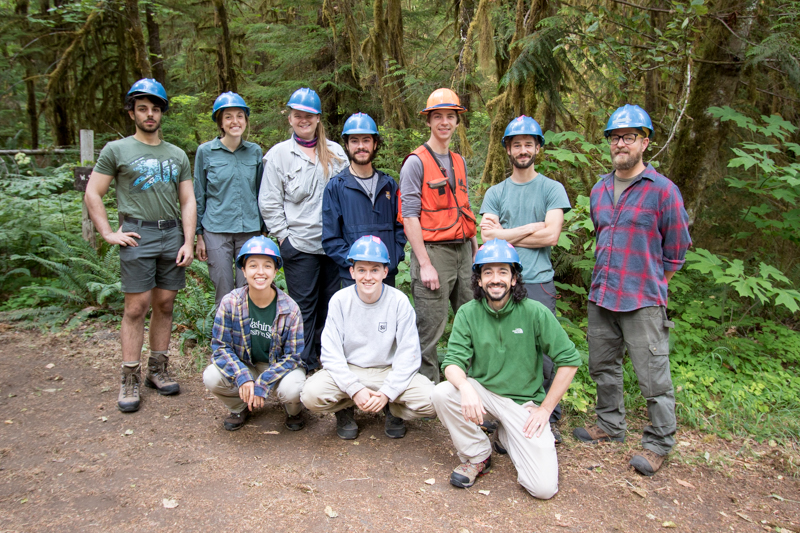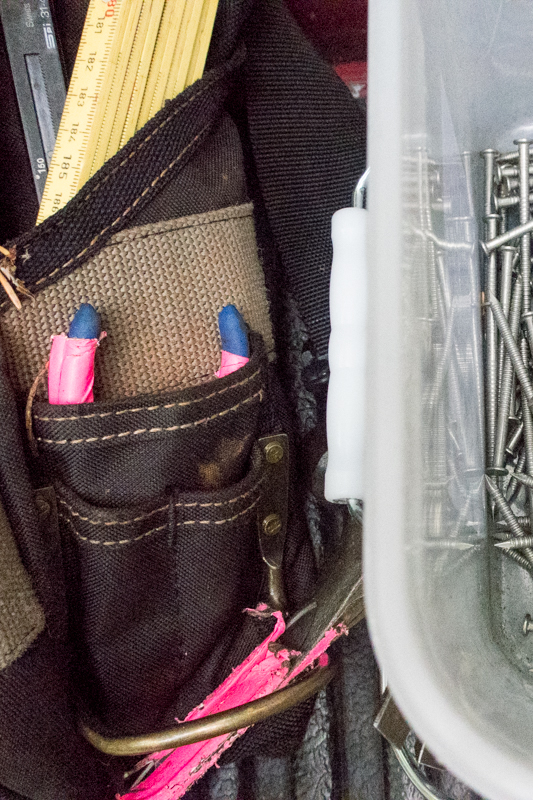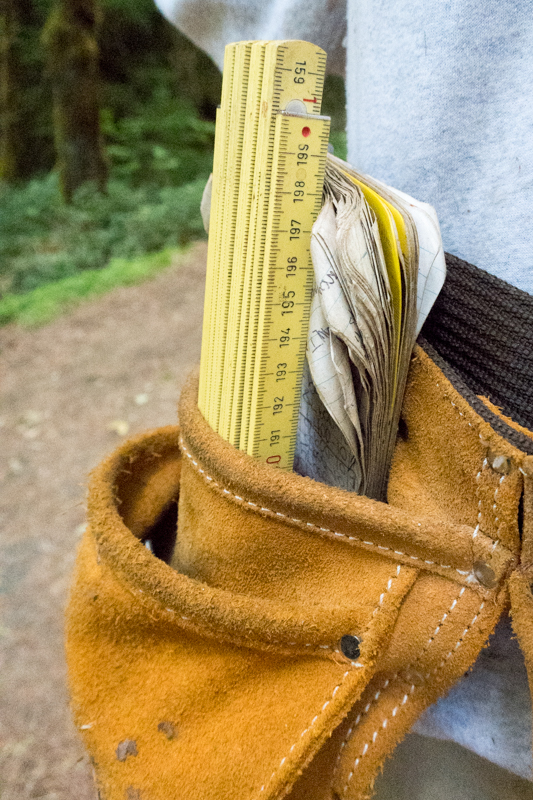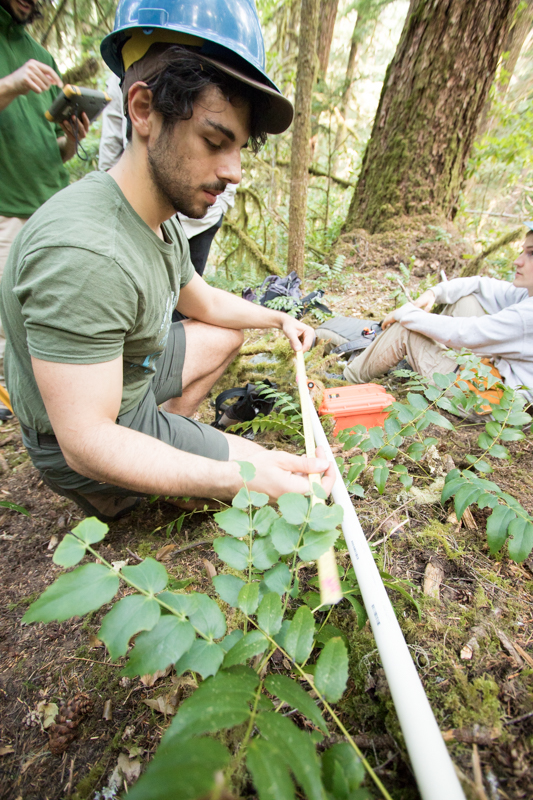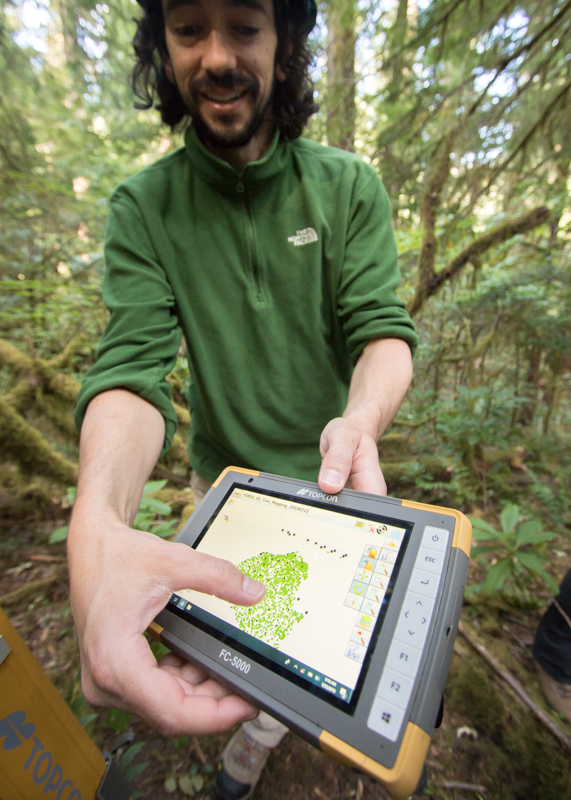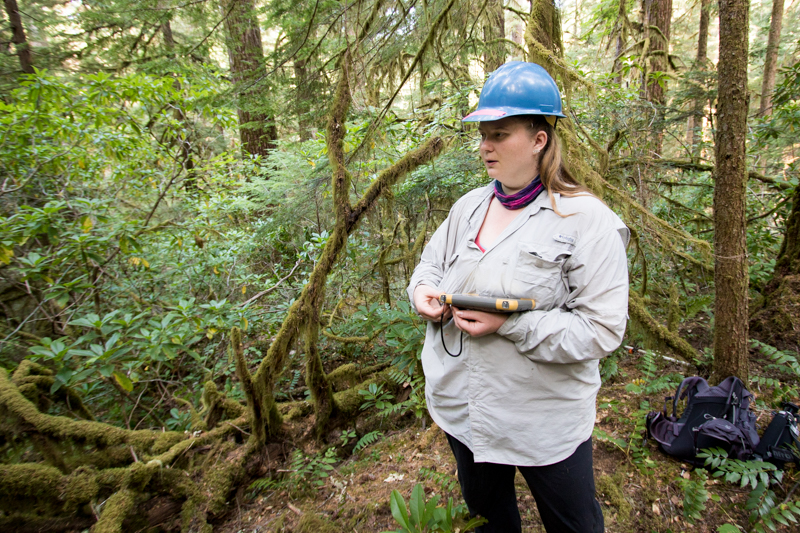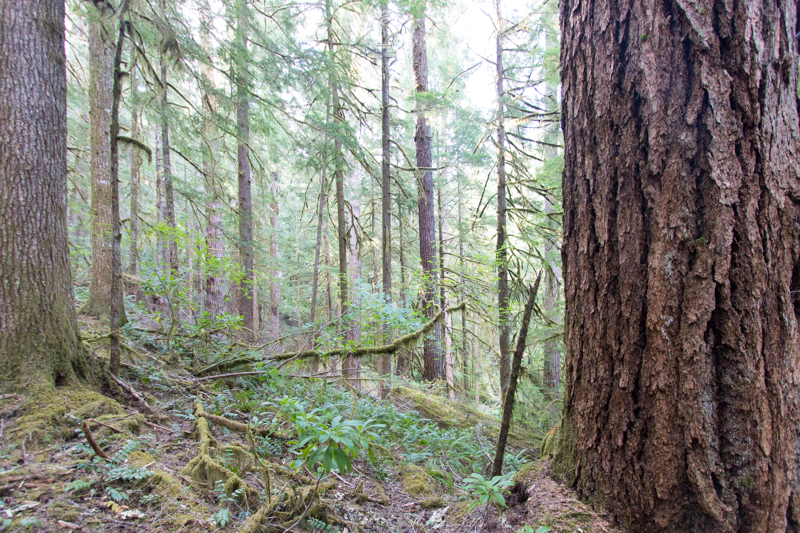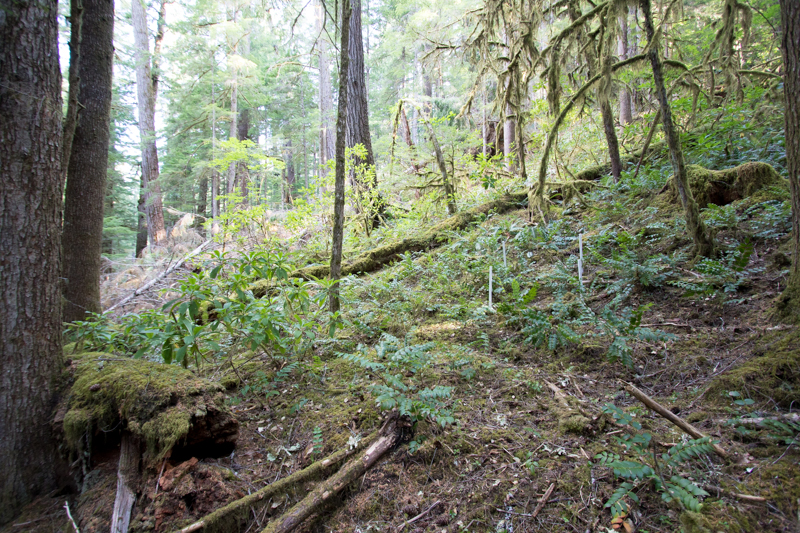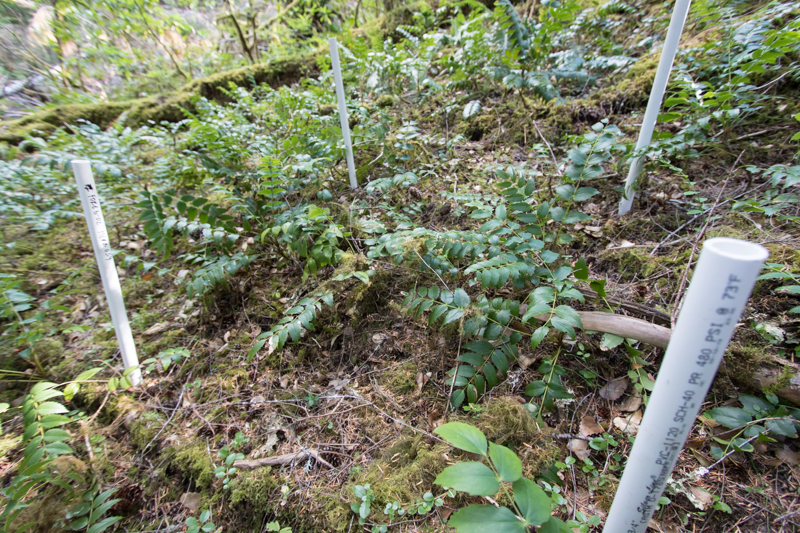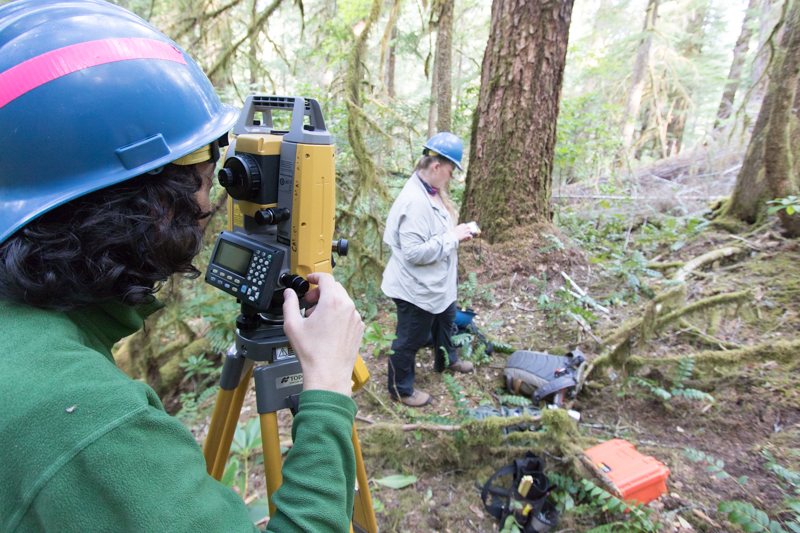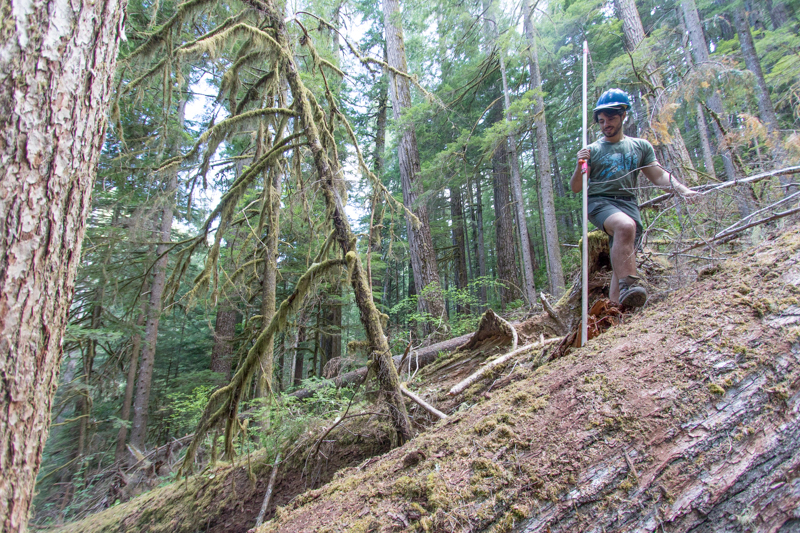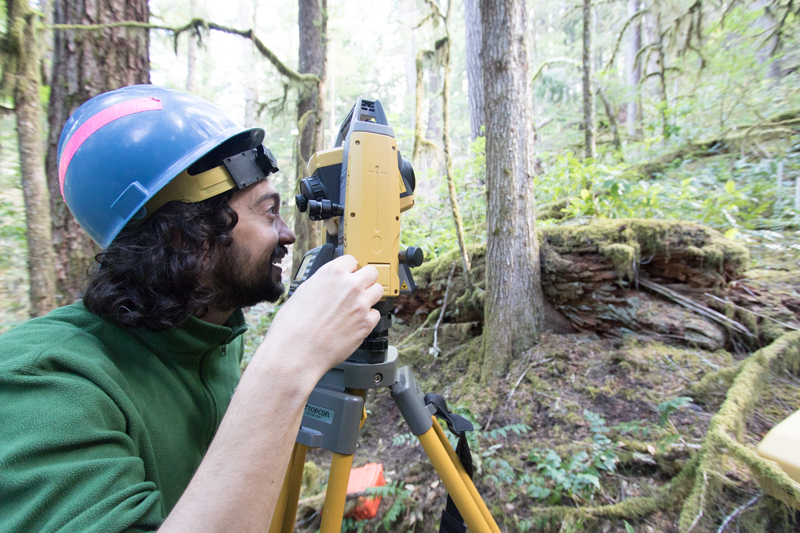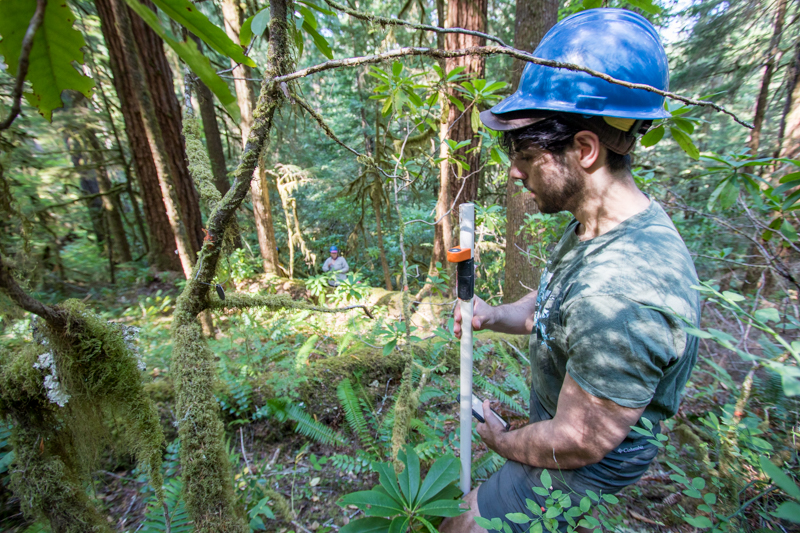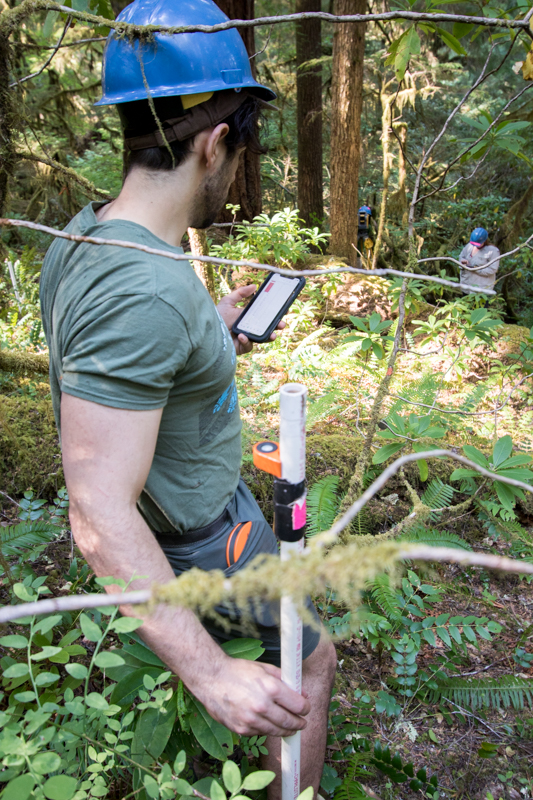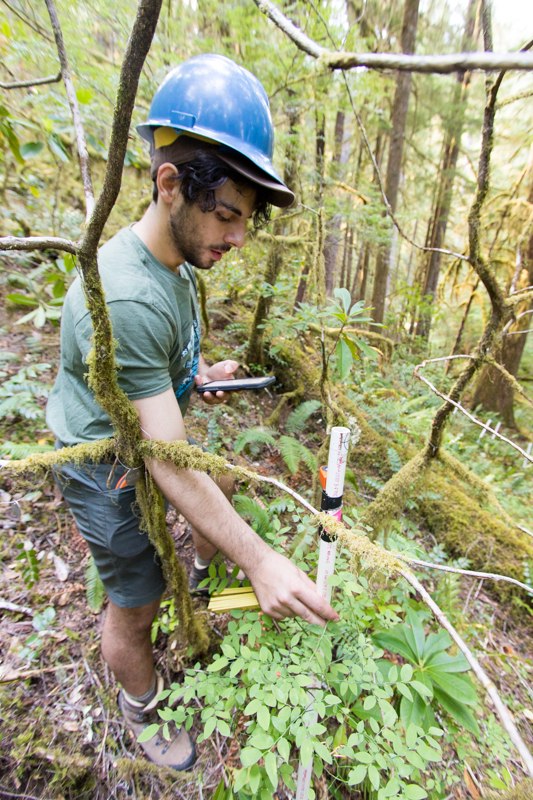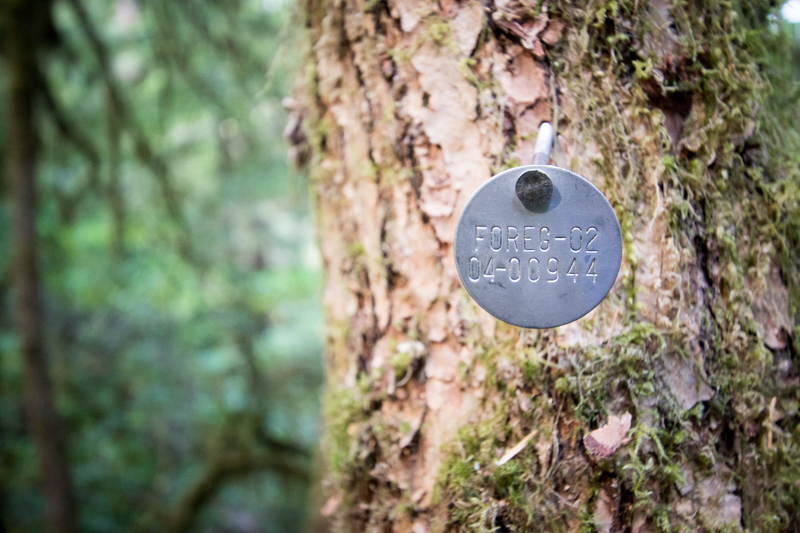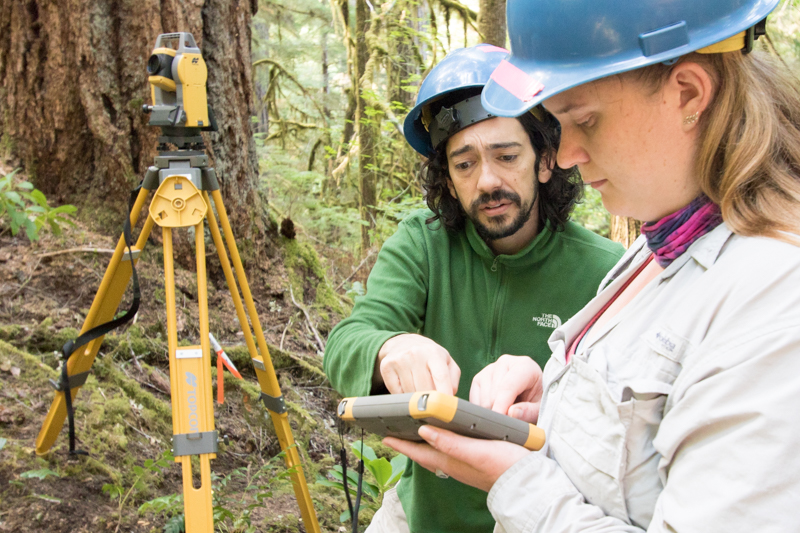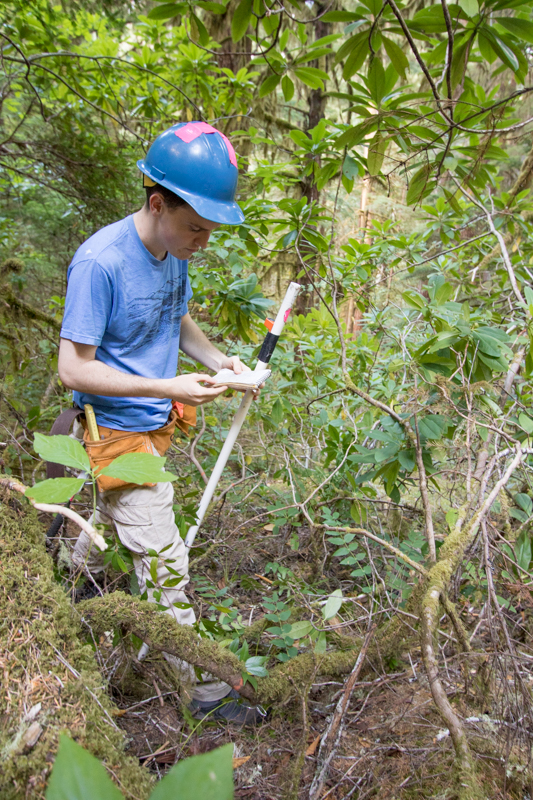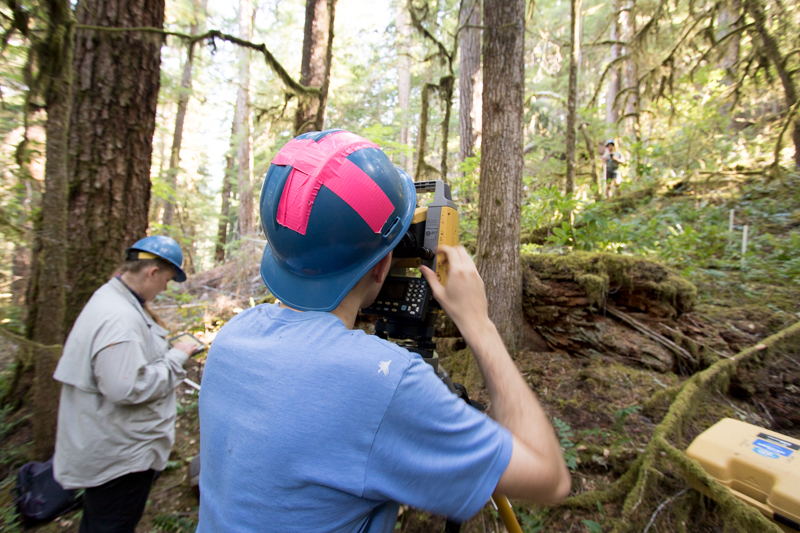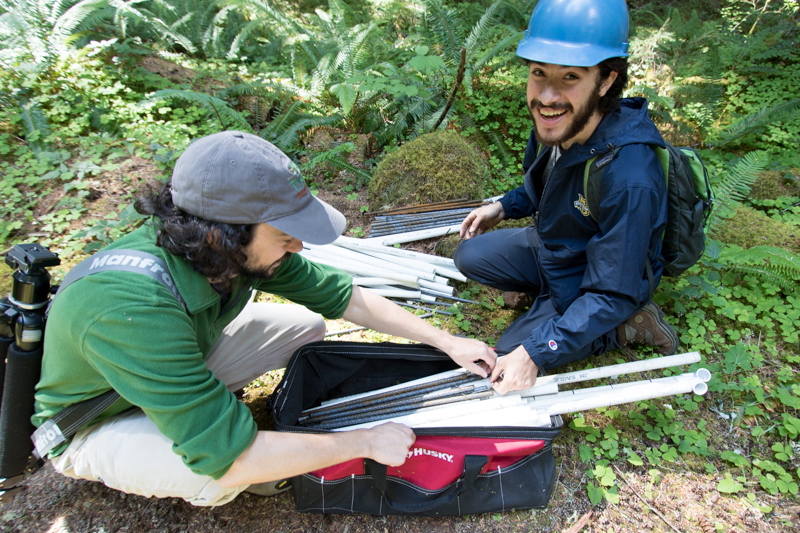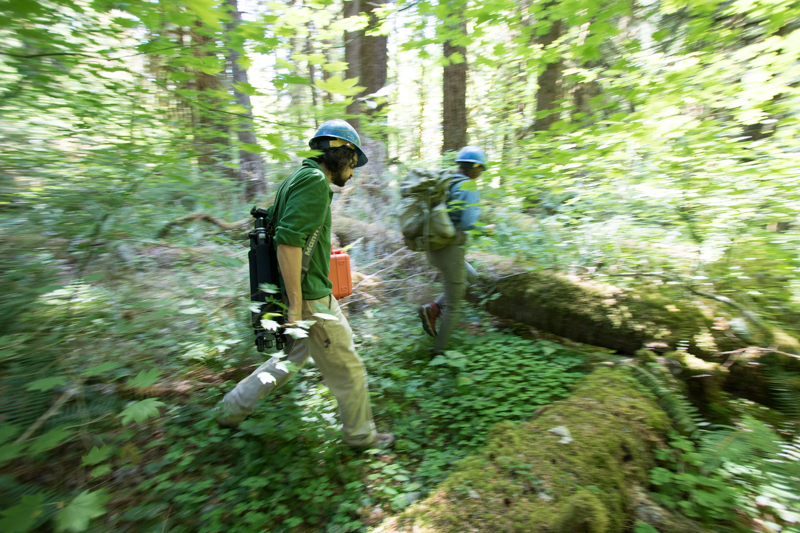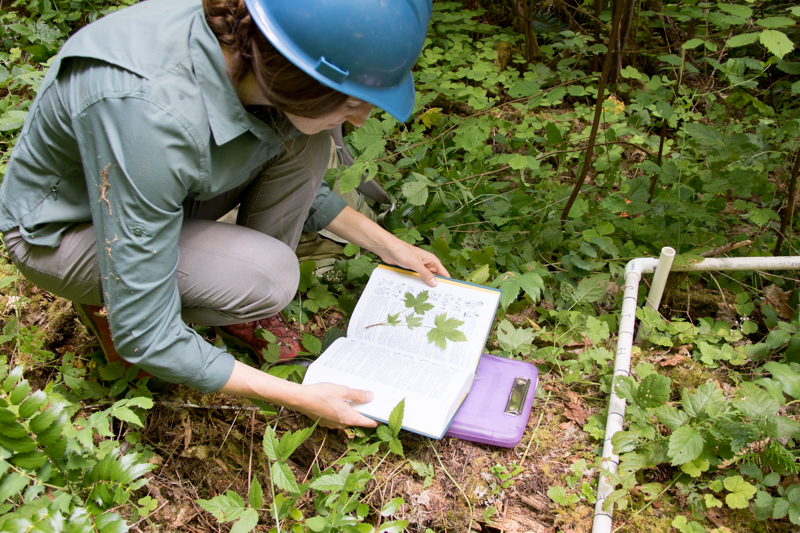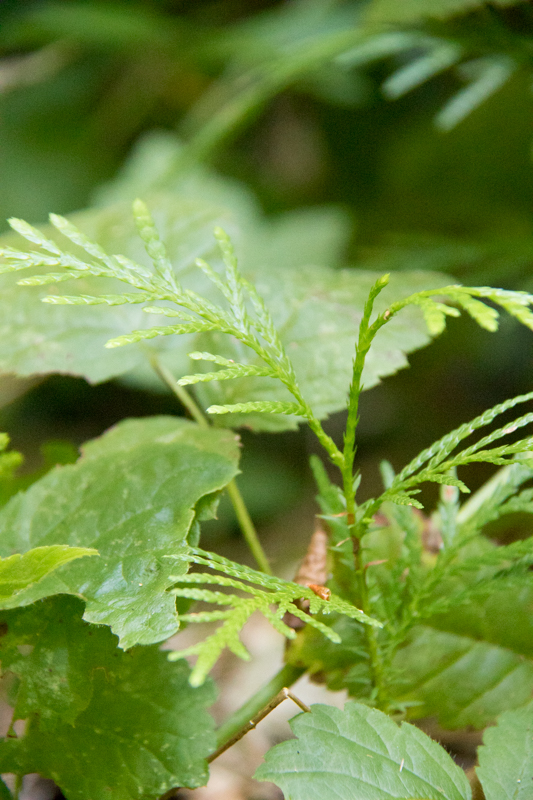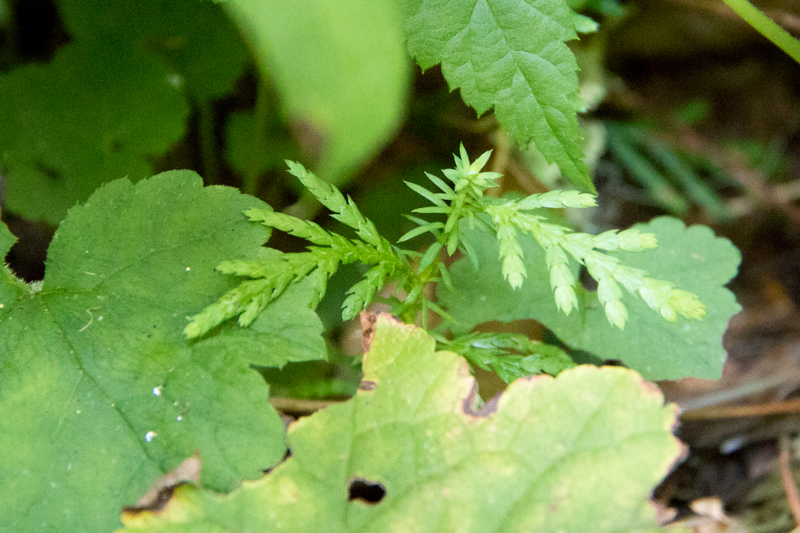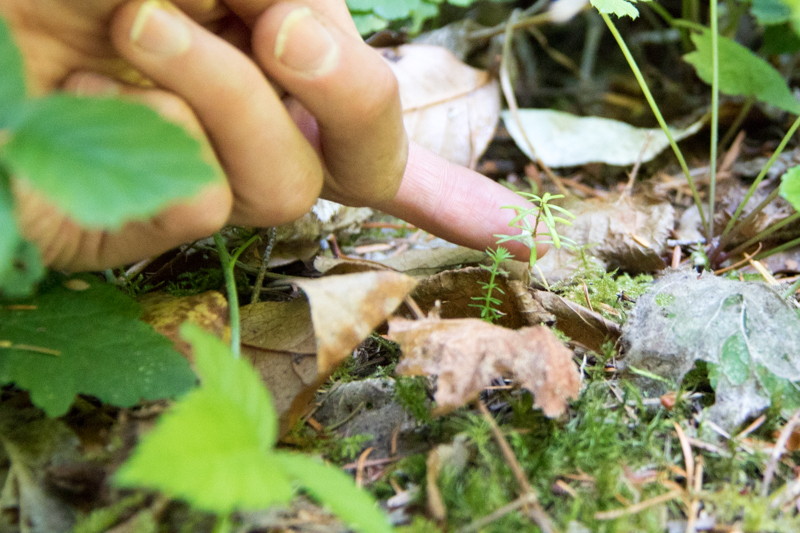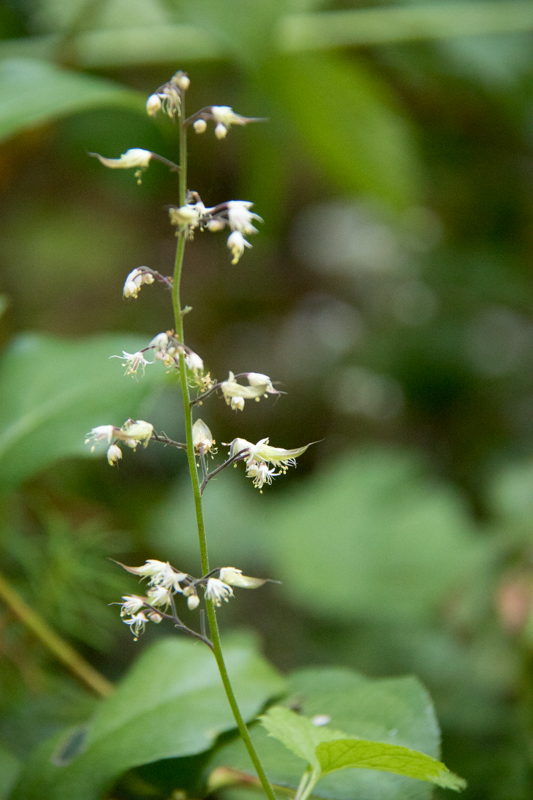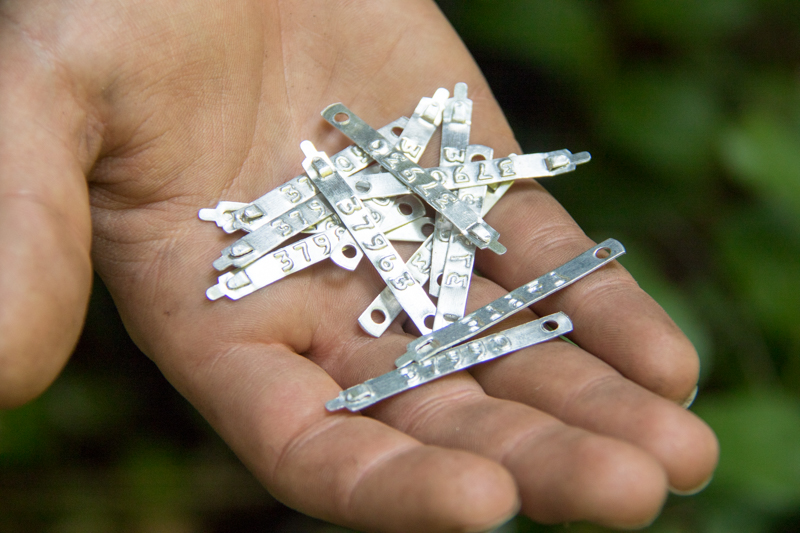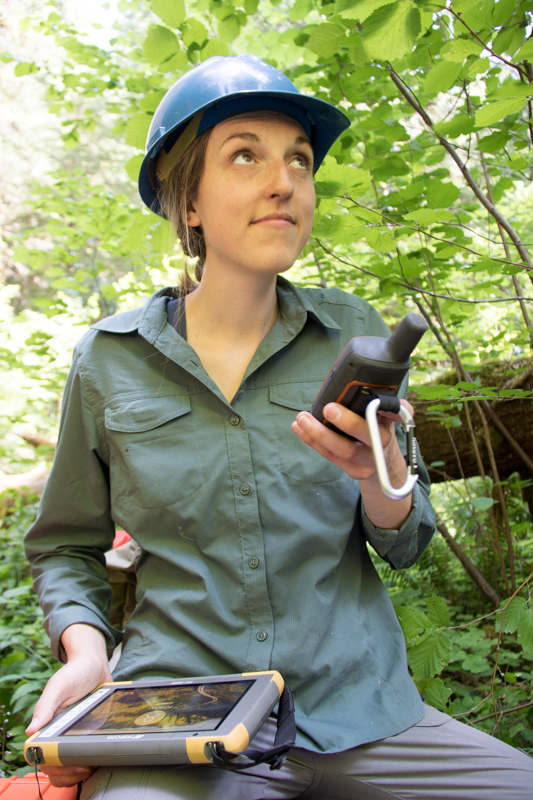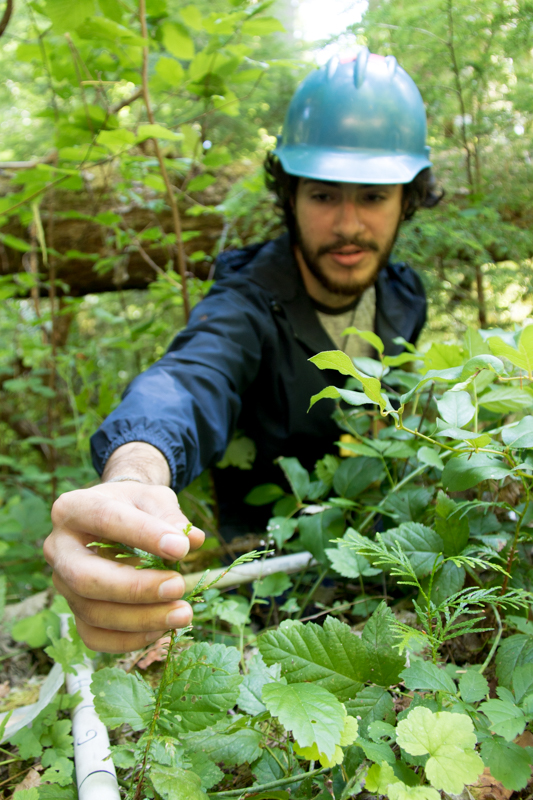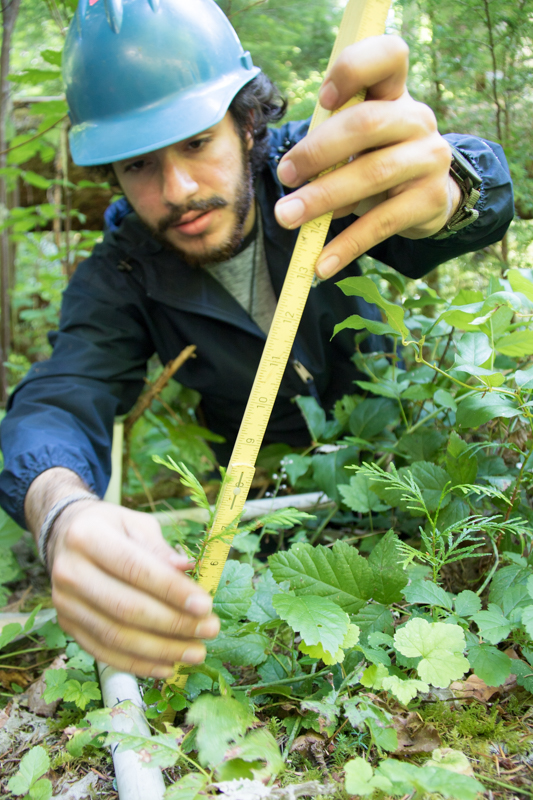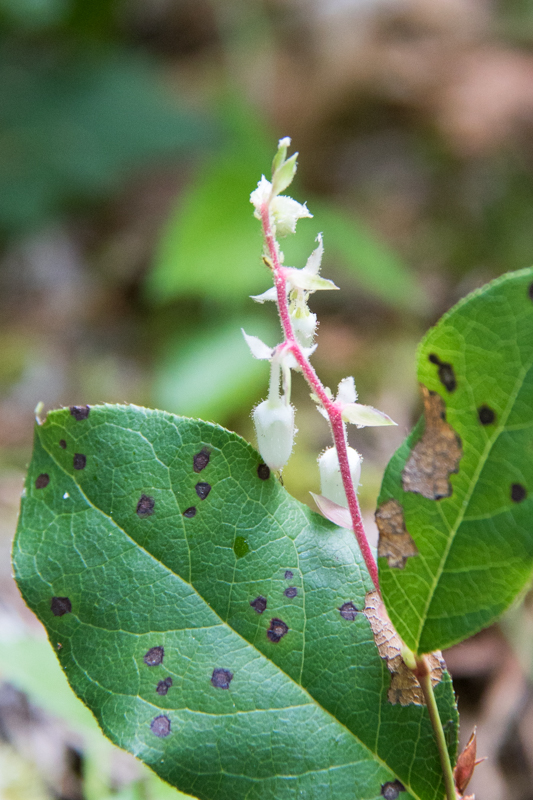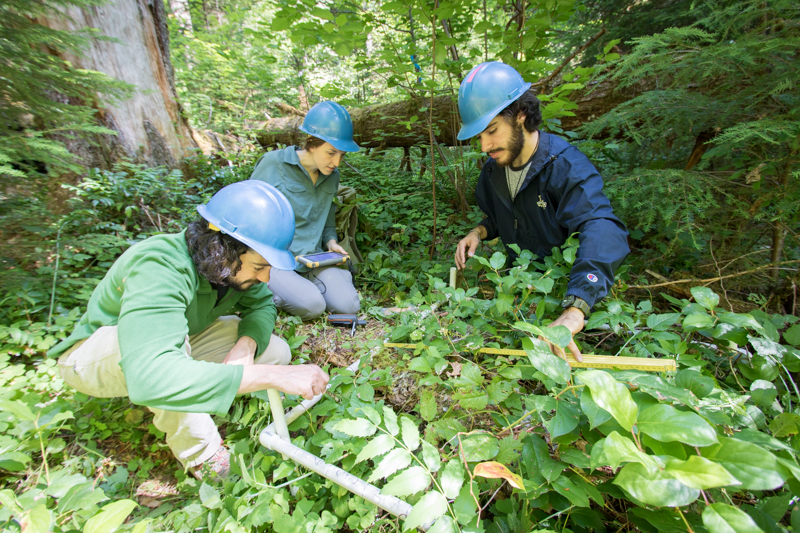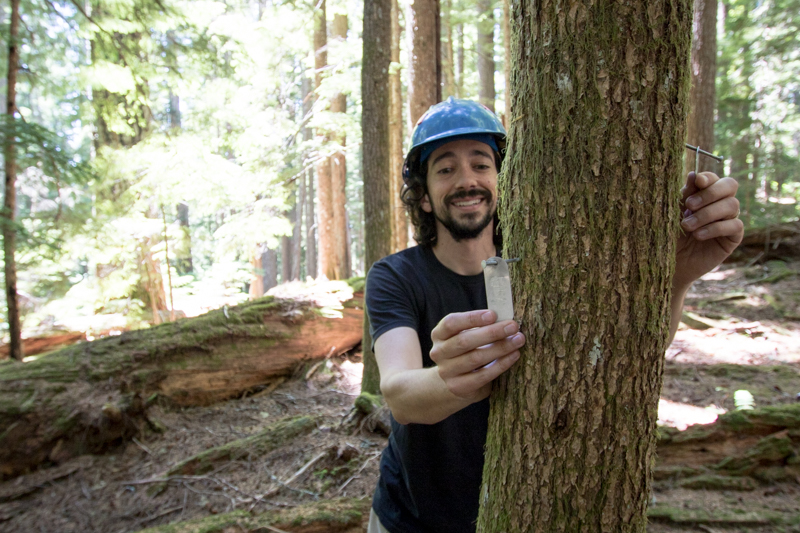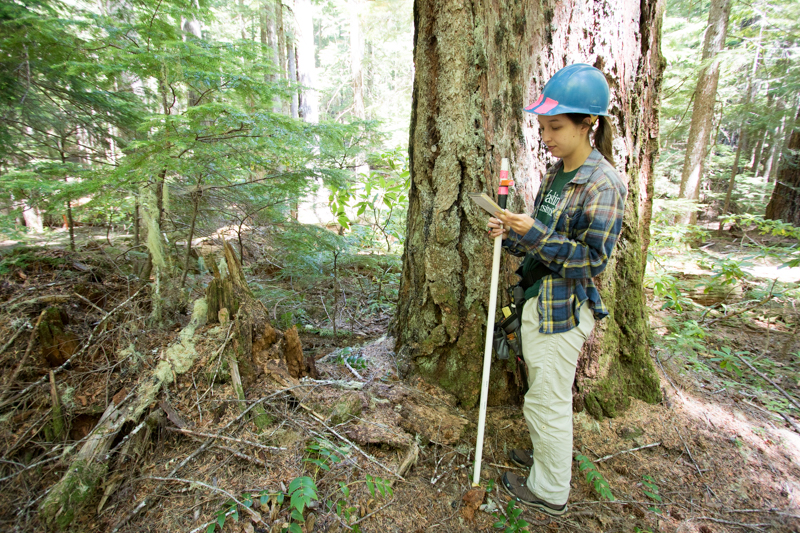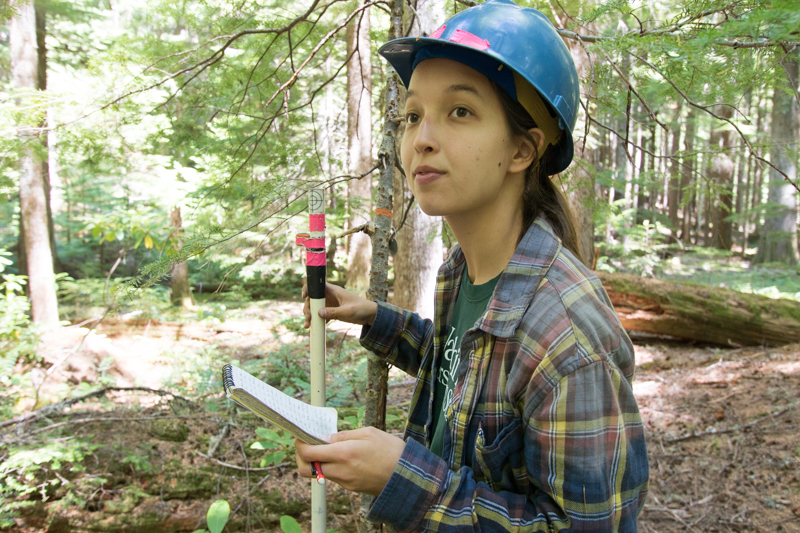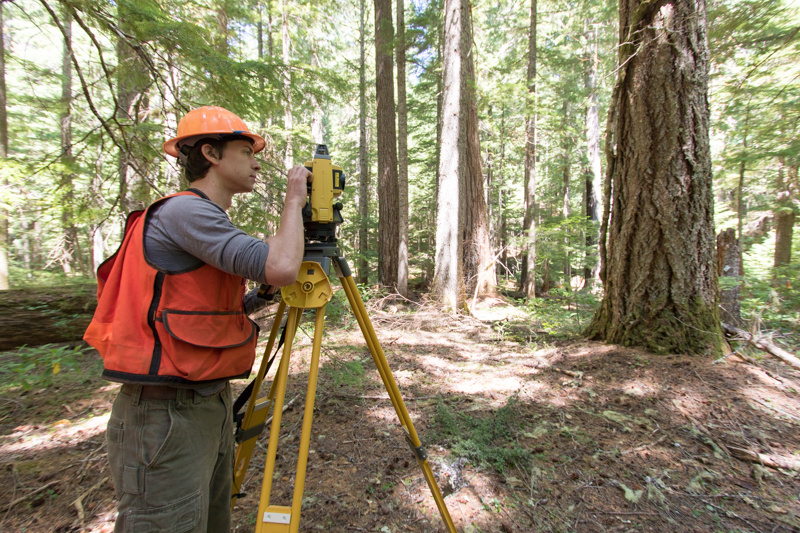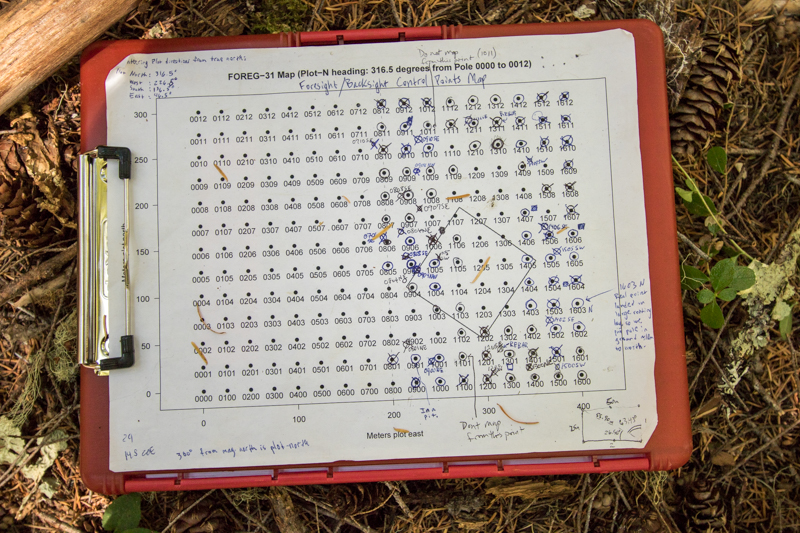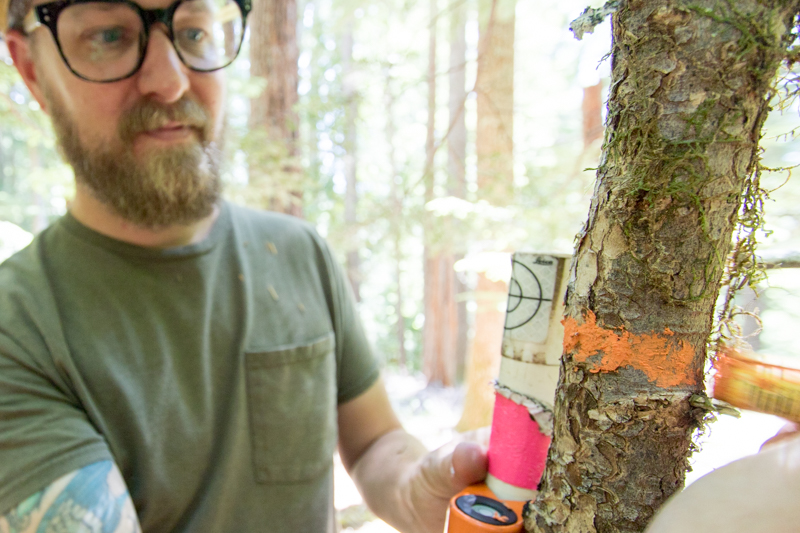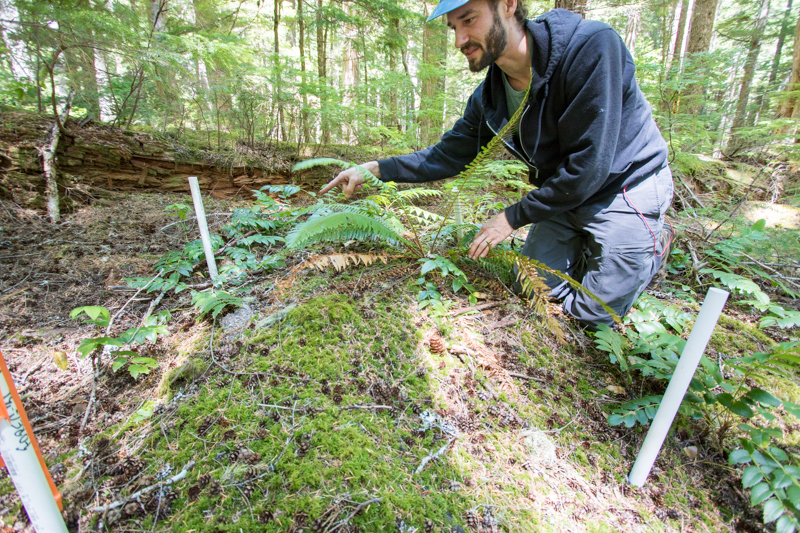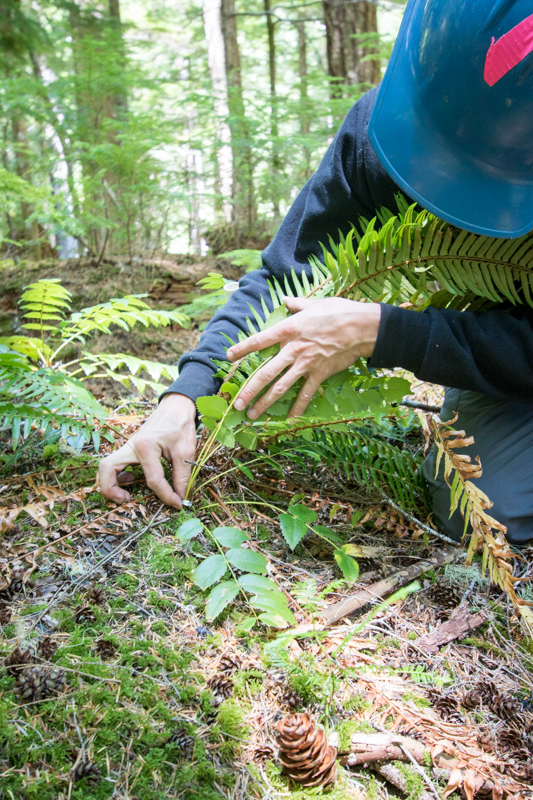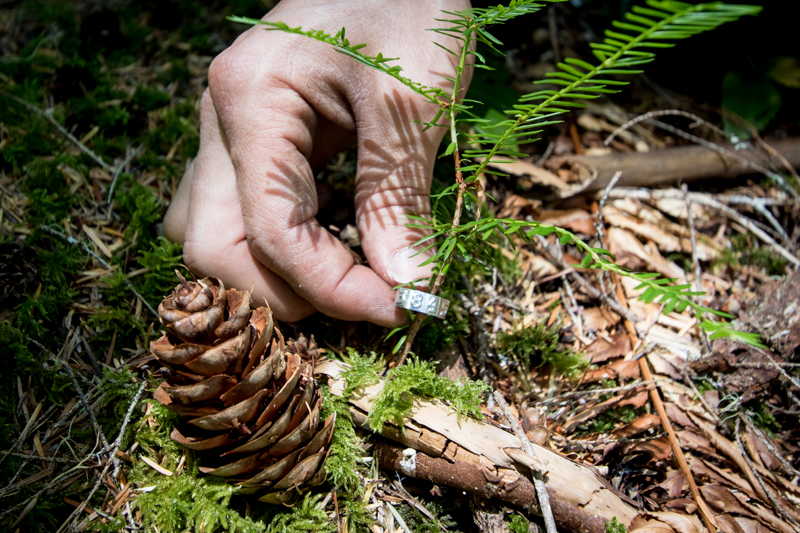The FOREG crew: (back row:) Matt Reala, Maggie Ross, Maddie Sutton, Ethan Torres, Adam Milenkowic, Aaron Nelson, Adam Carson, (front row:) Emily Dewald-Wang, Liam Engel, Joseph LaManna
Forests of Oregon Elevation Gradient (FOREG) 2019
The Forests of Oregon Elevation Gradient (FOREG) is a network of large sample plots, established in 2019, within the HJ Andrews Experimental Forest. The FOREG project was designed to dovetail and connect with the long-running Reference Stand study at the Andrews Forest. FOREG is also a part of the much broader Smithsonian "Big Plot" program. The FOREG study, run by Joseph LaManna at Marquette University, is designed to answer questions about drivers of biodiversity.
Some of the tools for big plot work: measuring stick, calipers, pliers, nails
One of the numbered metal identification bands used to mark any woody plants within each 1m-square plot
A plant marked with one of the metal identification bands
Joseph LaManna, lead on the project, inspects plants within a 1m-square plot
Liam Engel enters data into a tablet
Matt Reala notes the measurement height on a PVC pipe that will be used with the survey tool to map trees
Joseph LaManna shows data from this plot, FOREG02, which contains old Reference Stand 2. The data show every mapped stem and the underlying topography.
Maddie Sutton surveys vegetation within the plot
Joseph LaManna calibrates the laser survey tool (total station), which is used to map every stem larger than 1 cm diameter within the plot
A view within plot FOREG02, which contains Reference Stand 2.
A view within plot FOREG02, which contains Reference Stand 2.
Within each larger plot there are a series of 1m-square plots within which every stem is inventoried and recorded and within which all herbaceous plants are surveyed
Joseph LaManna (left) and Maddie Sutton (right) measure and record data on plant size and location
Matt Reala climbs through the plot and notes size, condition, and location of each stem >1cm in diameter
Joseph LaManna uses a laser survey tool (total station) to precisely map exact locations of stems within a plot
Matt Reala holds a PVC pipe with reflective target and rod level, used as the target for the laser survey tool (total station) in mapping stem distance and location
Matt Reala holds a PVC pipe with reflective target and rod level, used as the target for the laser survey tool (total station) in mapping stem distance and location
Matt Reala holds a PVC pipe with reflective target and rod level, used as the target for the laser survey tool (total station) in mapping stem distance and location
A tree tag, specific to the FOREG study, which provides a unique identifcation number to each tree or large shrub in the plot. This tag is on a western hemlock.
Liam Engel fact checks plants within the plot, to verify data recorded the day prior
Liam Engel locates trees that will then be mapped with the laser survey tool (total station)
Liam Engel (left) and Maggie Sutton (right) measure and record data on every plant with a stem diameter larger than 1 cm
Using the laser survey tool to map exact location of each stem
A tree tag, specific to the FOREG study, which provides a unique identifcation number to each tree or large shrub in the plot. This tag is on a Pacific yew tree.
Joseph Lamanna (left) and undergraduate student Ethan Torres pick up supplies they'll need for establishing 1m-square vegetation survey plots
Field crew co-lead Maggie Ross uses a GPS to locate the next 1m-square plot
Joseph LaManna and Maggie Ross move through the forest to the next survey plot
A view within plot FOREG38, which contains Reference Stand 38.
Maggie Ross holds up the frame of the 1m-square. It will be laid down over the ground vegetation, and everything within the frame will be inventoried and recorded
Laying down the 1m-square frame over the ground vegetation. Everything within the frame will be inventoried and recorded
Hammering rebar to anchor the corners of the 1-m square plots. The corners will be flagged and their locations marked with GPS. The plots will be revisited for years to come.
Maggie Ross verifies the identification of a plant using her reference guide
Maggie Ross verifies the identification of a plant (maple-leaf currant) using her reference guide
Maggie Ross verifies the identification of a plant using her reference guide
In the center is a small seedling of a cedar tree
In the center is a small seedling of a cedar tree. Note how the type of leaf changes from main stem to lateral leaves.
A very small seedling of western hemlock. Each seedling is noted, recorded, measured, and tagged.
A flower of a tiarella plant within the 1m-square plot
Maggie Ross verifies the identification of a plant using her reference guide
Maggie Ross uses a GPS to mark the exact location of the new 1m-squared plot
Wrapping a metal identification tag around the stem of a western red cedar seedling
Ethan Torres notes each plant within the 1m square plot
Ethan Torres measures the height of a seedling
Maggie Ross and Ethan Torres identify, measure, and record each plant within the 1m square plot
A close up of salal (Gaultheria shallon)
Joseph LaManna, Maggie Ross, and Ethan Torres survey every plant within their 1m square plot
A 1m square plot within the larger plot FOREG31
Joseph LaManna notes that trees can have two tags where the new FOREG plots and the old Reference Stands overlap. The two studies are planned to dovetail and complement each other (e.g. measurements will be taken at both nails in future years).
Emily Dewald-Wang holds a PVC pipe which is the target for the laser survey tool (total station). She calls out the species of tree, its size, and its condition. The data are recorded into a tablet and then the tree's location is mapped with the total station laser.
Joseph LaManna and Emily Dewald-Wang measure the diamater of a large Douglas fir tree.
Emily Dewald-Wang holds a PVC pipe which is the target for the laser survey tool (total station). She calls out the species of tree, its size, and its condition. The data are recorded into a tablet and then the tree's location is mapped with the total station laser.
Emily Dewald-Wang recording location, species, and condition of a tree within a forest dynamics plot.
Adam Milenkowic uses the laser survey tool (total station) to measure the exact location of each stem within the plot
A map of a 12-ha section of FOREG-31 (the megaplot, with a footprint of 25 ha), showing the reference poles from which the total station maps trees and stems. The diagonal-square on the right side of the map is historic Reference Stand 31.
Adam Milenkowic uses the laser survey tool (total station) to measure exact location of each stem within the plot. Data, called out from a person moving from tree to tree, is recorded in the tablet.
Adam Carson sets up the target for the laser survey tool (total station).
Adam Carson paints an orange ring around a stem to mark measurement height for future censuses.
Aaron Nelson looks over a 1m square plot within the larger plot FOREG 31
Aaron Nelson displays one of the metal identification tags that is placed around each stem within the 1m square plot

